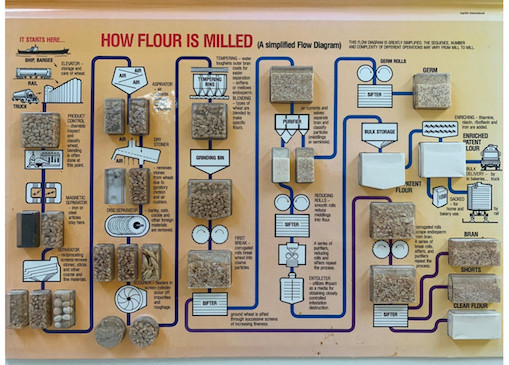Wheat kernels go into a mill and out comes flour—simple, right? Not exactly. When you look at different milling practices and all the flour grades that are made, the varieties stack up. Then, you have to take into account how these varieties act in different baked goods.
To help navigate the milling industry, Dr. Lin Carson and Dr. Jayne Bock talk with Bon Lee, who worked at a flour mill for six years as the quality control manager.
Lee shares his insight on the different aspects of milling and flour grades, and how to apply that information into the bakery. A few topics touched on include:
- Types of milling
- Chalk
- Flour grades
- The right flour for your product
- Cost of flour
Also discussed are the flour specs to look for when sourcing different flour grades for bread products:
- Bagels: high gluten flour from HRS wheat. The protein content is above 13%, and mixing characteristics are typical for those from a strong flour, namely a long development time and stability.
- Pan breads: strong flours from HRW wheat. They usually have a protein content around 10 – 12% or so with intermediate development time and long mixing stability coupled with high water absorption.
- Pizza: strong flour from a HRS wheat. Occasionally a high gluten flour may be needed depending on the type of pizza crust desired. The protein has to be balanced in terms of being both strong and yet still extensible.
Picking the right flour can go a long way for your product, so it helps to know what to look for when it comes to grades and specs. Plus, pick up a few tips on how to cut costs for your flour!
How flour is milled


